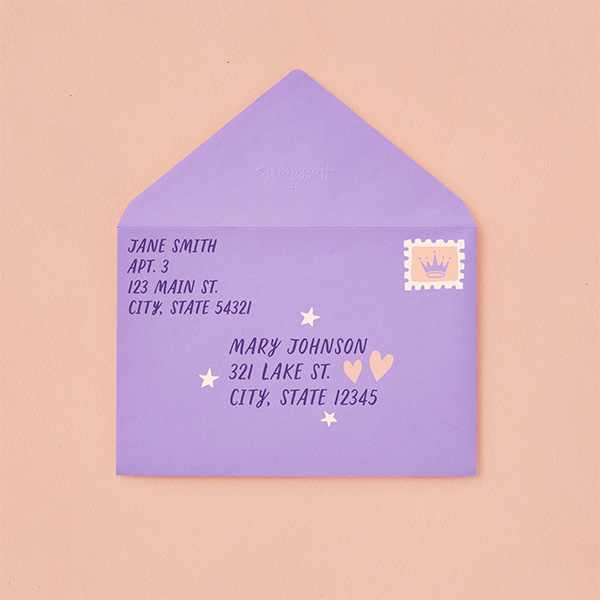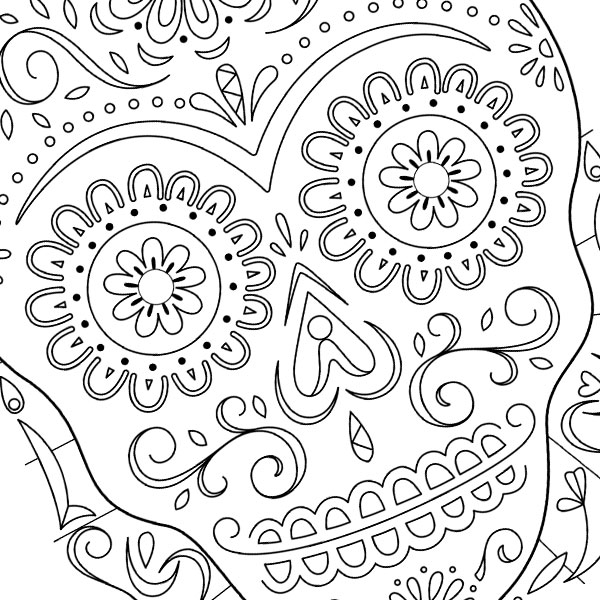How to make a Day of the Dead altar: A personal story

My mom passed away August 27, 2016. When I came back to work at Hallmark, we were working on an activity for Hispanic Heritage Month: creating a display of Day of the Dead (Día de Muertos) altars. HEART (the Hispanic Education Awareness Resource Team at Hallmark) suggested I make one for my mother. I thought it might be too soon—I wasn’t sure if I could do it, emotionally. But I decided it would be good therapy. First, though, I needed to research how to make a Día de Muertos altar.
Inspired? Create and share by tagging @hallmarkstores.
What is a Day of the Dead altar?
In parts of Mexico—and more and more, in the United States—people celebrate Día de Muertos, Day of the Dead, on November 1 and 2. The first day you honor children, and the second is for remembering adults who have passed. Families create altars to display ofrendas, or offerings, to welcome the spirits of loved ones into their homes.

Mom was Panamanian and Dad is Mexican-American, but we didn’t really do altars growing up. In Panama, there was a procession, and then you’d go to church.
Because it’s part of my culture, I wanted to make an altar and to learn as much as I could about how to choose ofrendas.
Altars are built in multiple levels on tables and include a mix of personal items and traditional components. The altar can commemorate one person or many people and honor people you know or celebrities you love. One friend, for example, covers her huge dining room table with little altars for members of her family and friends. She invited me to add one for my mom with a photo and a candle.
As we went through Mom’s house, I started to pull things together. I gathered things she loved, photographs and objects with stories behind them.

Traditional offerings in a Día de Muertos altar
Altars have different levels to symbolize the journey between heaven and earth. Because Mom was Catholic, mine had three, representing heaven, purgatory and earth. Some altars have a lower level to represent the underworld, and others include steps to heaven.
Traditional Día de Muertos ofrendas include:
- Calaveras are the best known Day of the Dead symbols. The candy sugar skulls are decorated with frosting and sometimes personalized with names.
- A dish of salt is a purifying element.
- A cup of water and favorite foods refresh the souls when they return. Many include pan de muertos, a sweet bread. Water is also included as one of the four elements.
- Orange marigolds, cempasúchil, represent earth.
- Papel picado, decorative cut tissue paper, are hung in banners to represent wind.
- Candles, part of the Catholic tradition, represent fire.
- The smell of incense—usually copal—is said to draw souls to the house. I love the smell.

Personalizing Day of the Dead altars
Gathering meaningful items and remembering stories are part of what makes this so healing. Everything I added to my mom’s altar meant something.
- Because Mom was from Panama, I found fruit grown there: yucca, chayotes, mangoes. Every Christmas I go home, and one of our traditions is to go to midnight mass. My mom would always make us Mexican hot chocolate—the Abuelita brand. I included the little Mexican chocolate tablets and a mug to symbolize the hot chocolate she would make after mass.
- A cross is there to represent our Catholic faith, and I added a little ceramic angel a coworker gave me after Mom died.
- Choosing a photo is one of the most important things. I selected a smaller version of the one we displayed next to the casket at her funeral. I added a photo of her with my dad and me as an infant.
- Mom loved making ceramics for people. She’d always ask, “If I could make you a ceramic, what would it be?” I have pictures of her making a purple lizard for me, so I included those and the lizard.
- She loved word searches. Her first language is Spanish, so sometimes she would be doing word searches and ask, “What does this mean?” She would always look for the words and was eager to learn.
- When we were cleaning out her house, we would find pennies. We found them in every room where you would least expect them. We didn’t know whether scattering pennies was a superstition or for good luck because she never told us. We gathered them, and when I was making the altar, I knew I had to scatter those pennies all over.
- Mom loved to cook and had a huge crush on Guy Fieri. So I added a Food Network magazine folded to look like a fan.
- She was happiest when she put on traditional Panamanian music, so I displayed some of her albums.
- I also included a few of the elephants and hummingbirds Mom enjoyed collecting.

Celebrating life and love
Building the altar took about half a day, and there were lots of emotional moments. But I was very happy with the way my Diá de Muertos altar turned out. I don’t believe you have to be Catholic or Hispanic to want to honor someone you love in this way. It’s a beautiful tradition to try.
Shop Día de Muertos
See allYou may also like
See more-
Gift Wrapping How to put tissue paper in a gift bag
Gift bag + tissue paper = a quick gift-wrap solution. Sure, it’s easy enough, but there are a couple of tricks to ...
-
Gift Wrapping How to make tissue paper flowers
Who doesn’t like to get flowers? A tissue paper flower can brighten any gift. All you need is five pieces of tissu...
-
Gift Wrapping How to wrap a present: a step-by-step guide with pictures!
In theory, we all know how to wrap a present. You get some wrapping paper, fold it around a box, tape the paper—in...
-
Fall How to write literary calaveras for Día de Muertos
You’ve made your ofrenda (altar), hung your papel picado (paper banners), and decorated your calaveras de azúcar (sug...
-
Wedding How to write vows that wow for your wedding
Learn how to write vows that wow for your wedding with these tips from Hallmark writer Stacey Donovan.
-
Fall DIY calaveras de azúcar: How to make sugar skulls for Día de Muertos
Calaveras de azúcar—literal sugar skulls—are beautiful pieces of Día de Muertos (Day of the Dead) rituals and tradition.
-
Card Ideas How to address an envelope
Not long ago, dropping a note in the mail was part of everyday life. Now we communicate instantly with texts, emails,...
-
Fall How to make a papel picado for Día de Muertos
How to make a papel picado.
-
Fall Día de Muertos: A celebration of life and love
Día de Muertos, Day of the Dead, is a holiday originally celebrated in the southern and central parts of Mexico and i...
-
Arts, Crafts & DIY Día de Muertos crafts to celebrate with family
The sweet smell of pan de muerto baking, colorful decorations and pictures selected with care, special memories being...
-
Arts, Crafts & DIY Day of the Dead Sugar Skull Coloring Page
Day of the Dead, Día de Muertos—a celebration of loved ones who have passed away—originated in Mexico and is obser...
-
Gift Wrapping How to make a bow out of ribbon
Adding a bow on top is the classic finishing touch to any gift. Watch the fun gift-wrapping video tutorials below ...
-
Christmas Bake up Christmas cheer with a homemade gingerbread house
Whisk off to a snow-covered chalet this holiday season with a homemade gingerbread house fresh from your oven. Car...
-
Thank You How to write a thank-you note
Since the dawn of time, people have struggled with the right way to say thank ...














